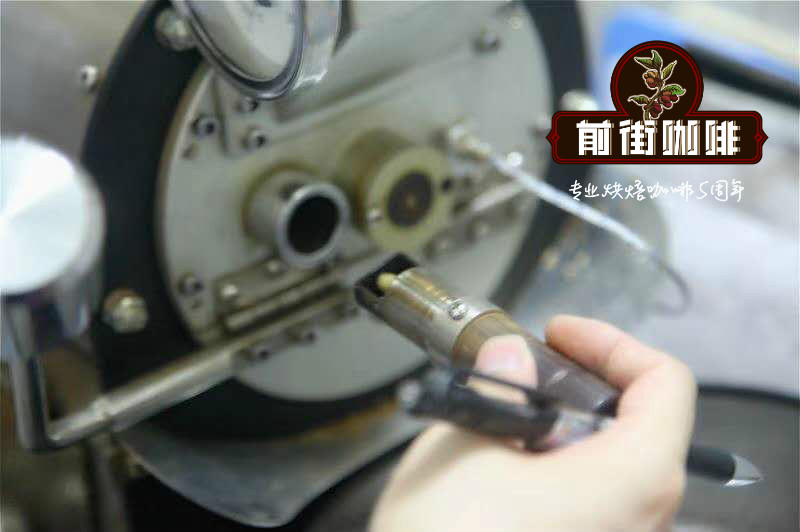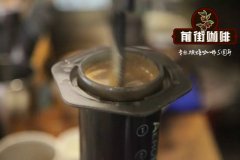Size of Ethiopian coffee beans introduction to coffee varieties grown in Ethiopia

Professional coffee knowledge exchange more coffee bean information please follow the coffee workshop (Wechat official account cafe_style)
In Arabica, it is not easy to plant plants if the weather is different, so it is often found on high-altitude hillsides, and the artificial harvest is very high, but because of its low caffeine content and overflowing aroma, it is very popular among coffee lovers.
The spread of coffee shuttles between the northern and southern hemispheres. But in fact, its footprints in its place of origin are also quite tasty. Ethiopia (Ethiopia) is located in East Africa. Its territory is divided from southwest to north by the Great Rift Valley of Africa: the mountains in the west are believed to be the source of coffee; the ancient city of Hara in the east is the Islamic city-state of the early coffee outlet; the southern highlands are world-famous; and Addis Ababa, the current capital, and Lalibela, the ancient capital of the north, in the center of the country, are linked to century-old coffee rituals and traditions. 1/4 people in Ethiopia (Ethiopia) are directly or indirectly involved in coffee production. Although it is the largest coffee producer in Africa, 40% of it is reserved for domestic sale. Thus it can be seen that coffee is a part of local life.
Kaffa is the cradle of Arabica coffee. Adding up to only a few hundred varieties (congenital or derived) from countries around the world, there are tens of thousands of species in this treasure house, most of which are still unclassified. Heirlooms (original species) is the unique name of Ethiopia (Ethiopia). It seems to tell the world that its varieties are all-inclusive and only need to be summarized in one word. In addition to the ancient species Typica and Geisha, farmers are also named after their own distinctions, such as the "Sidamo species" and the "Yegashev species". Jimma Agricultural Research Center under the Ministry of Agriculture is cultivated under the code name. For example, Ninety Plus's Kemgin coffee comes from the variety codes 74110 and 7487.
Since ancient times, people in Ethiopia (Ethiopia) have been planted, harvested, processed and cooked by hand. In the 1970s and 1980s of industrialization, the country also benefited from misfortune because it promoted socialism and retained small-scale production under the prohibition of the military regime Derg. Until modern times, the planting mode of farmers is also quite primitive. In the western forest areas (Kaffa, Illubabor), they will use local materials to harvest coffee fruits (Forest Coffees) from wild fruit trees. They don't fertilize or cut tree trunks, so their production capacity is very low. In the Semi Forest Farming model, farmers move trees from the forest to farmland and irrigate them with organic manure. The most common Garden farming is family farming, which is planned by the nursery. More than half of farmers also operate in the most common model in Africa.
After harvest, farmers will sell the fruit to nearby treatment plants. However, because Egypt has registered the production areas (Yirgacheffe, Sidamo, Harar), the law stipulates that farmers in the same area can only be sold to the treatment plants in the same area. The price is also regulated by the government. With the exception of a few accredited cooperatives, all coffee is mixed and auctioned by the Commodity Exchange (ECX). For example, the exchange code WSDB coffee, is the first-class and second-class water wash Sidamo. But this shipment is actually a mixture of Aleda, Wondo, Amaro, Dale, Wensho and other nine producing areas in Sidamo province! Under the tide of boutique products that like to "find out the root and ask the bottom", the practice of the authorities is going against the trend.
END
Important Notice :
前街咖啡 FrontStreet Coffee has moved to new addredd:
FrontStreet Coffee Address: 315,Donghua East Road,GuangZhou
Tel:020 38364473
- Prev

Uganda Coffee, the seventh largest coffee producer in the world, what is Ugandan replicative coffee?
Professional coffee knowledge exchange more coffee bean information Please pay attention to Coffee Workshop (Wechat official account cafe_style) Uganda is located in the East African Plateau, with an average elevation of 900m, many lakes, the title of East African Plateau Water Township, across the equator and a warm climate, witnessing an ideal environment for cultivating high-quality coffee. Ugandan boutique coffee, elegant acidity, rich layers, warm and mellow
- Next

How do you make Indian coffee? What kind of good Indian coffee do you have? Introduction to the flavor of Indian monsoon coffee
Professional coffee knowledge exchange more information about coffee beans Please pay attention to the coffee workshop (official Wechat account cafe_style) Coffee has become the first drink in the world only 1600 years later, so the recorded history of coffee is only 400 years similar to that of Taiwan. It is generally recognized that Africa is the home of coffee, originated in Ethiopia and spread around the world from the port of Mocha in Yemen.
Related
- Detailed explanation of Jadeite planting Land in Panamanian Jadeite Manor introduction to the grading system of Jadeite competitive bidding, Red bid, Green bid and Rose Summer
- Story of Coffee planting in Brenka region of Costa Rica Stonehenge Manor anaerobic heavy honey treatment of flavor mouth
- What's on the barrel of Blue Mountain Coffee beans?
- Can American coffee also pull flowers? How to use hot American style to pull out a good-looking pattern?
- Can you make a cold extract with coffee beans? What is the right proportion for cold-extracted coffee formula?
- Indonesian PWN Gold Mandrine Coffee Origin Features Flavor How to Chong? Mandolin coffee is American.
- A brief introduction to the flavor characteristics of Brazilian yellow bourbon coffee beans
- What is the effect of different water quality on the flavor of cold-extracted coffee? What kind of water is best for brewing coffee?
- Why do you think of Rose Summer whenever you mention Panamanian coffee?
- Introduction to the characteristics of authentic blue mountain coffee bean producing areas? What is the CIB Coffee Authority in Jamaica?

